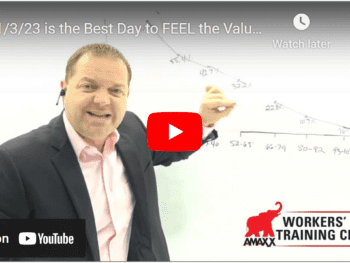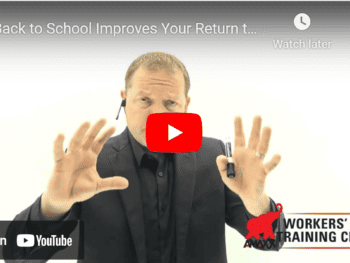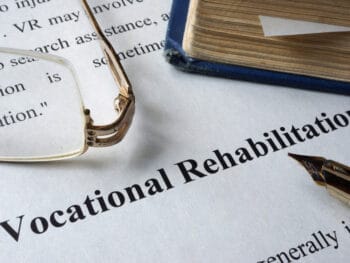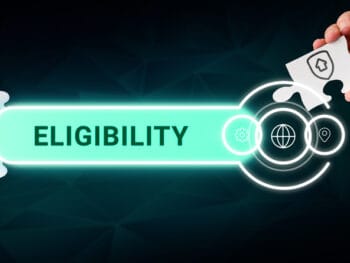
History of Vocational Rehabilitation Benefits in Work Comp
Vocational rehabilitation was initially not a part of workers’ compensation benefits for an employee following a work injury. The late 1960s and early 1970s saw the need to add it to the suite of benefits available to an employee that was viewed as a necessity and others as the added cost of workers’ compensation laws. Regardless of one’s position on its inclusion, the addition of vocational rehabilitation benefits has helped countless employees recover from work injuries and return to the workplace.
This post is one in a 4-part series:
- Using Vocational Rehabilitation to Resolve Work Comp Cases: A Primer
- Using Vocational Rehabilitation to Resolve Work Comp Cases: Eligibility For Services
- Using Vocational Rehabilitation to Resolve Work Comp Cases: Managing the Voc Rehab Plan
- Using Vocational Rehabilitation to Resolve Work Comp Cases: Dealing with Retraining
Vocational rehabilitation benefits consist primarily of three categories of services. Each service is unique and fills a role in the void left by wage loss and medical benefits. All of these services are conducted under the supervision of a vocational counselor trained in disability rehabilitation and medical services. The qualifications and requirements of a vocational counselor are lyrically defined by law or regulation and vary in each jurisdiction:
- Medical Management Services: Injured employees experience high frustration attending countless medical appointments. This is compounded by doctors using terms they might not fully understand or comprehend. A vocational counselor will often attend medical appointments with the employee to help explain what is being said and discuss the ramifications of procedures such as surgery or the use of prescription medications.
- Direct Job Placement and On-The-Job Training: Employees struggle returning to work, especially when it is in a different role, different employer, or working within restrictions following a work injury. This can be the case when an employee has limited transferable job skills or has worked for a single employer for an extended timeframe. Job placement services encompass a wide variety of functions, including assistance in job applications, developing a resume, and seeking job postings in the employee’s area(s) of interest.
- Formal Retraining includes a formal education program at a trade school or traditional college. The vocational counselor must develop a formal plan that is subject to approval or the litigation process when the defense interests file a timely objection. These plans include the costs associated with the educational portions and other miscellaneous expenses reasonable to retraining.
Vocational counselors are generally required not to be advocates but are limited to assisting the employee in completing the established and approved vocational rehabilitation plan. A vocational counselor can be subject to sanction or penalty if they engage in any activity or communication considered advocacy.
The Goal of Vocational Rehabilitation: Restore an Injured Life
The goal of any vocational rehabilitation plan and activity performed by a vocational counselor is to restore the injured employee to their pre-injury job or assist the employee in attaining an economic status as close as possible to what they would have enjoyed without the disability. While vocational rehabilitation is seen as an added cost to a workers’ compensation program, interested stakeholders and members of the claim management team should embrace it as an opportunity to reduce costs and resolve disputes.
While there are added costs to vocational rehabilitation, here are some of the opportunities it presents:
- Encourage return to work by using the vocational counselor to assist the employee in returning to their pre-injury position or help with job search efforts;
- Use the vocational counselor as a reliable point of contact when it comes to returning to work and medical management efforts; and
- Identify barriers the employee faces after a work injury and assist in moving a claim toward settlement and closure.
Claim handlers and other stakeholders should proactively select a vocational counselor and challenge an employee’s efforts with compassion and empathy.
FREE DOWNLOAD: “13 Research Studies to Prove Value of Return-to-Work Program & Gain Stakeholder Buy-In”
Conclusions
Additional vocational rehabilitation services added another layer of benefits available to an injured employee. Due to the inclusion of these services, members of the claim management team have been required to deal with a complex system that some view as adding additional costs. While vocational rehabilitation services can be an added cost to the workers’ compensation system, it should be an opportunity to be creative and work with vocational counselor and other stakeholders to drive claims toward settlement.

Contact: mstack@reduceyourworkerscomp.com.
Workers’ Comp Roundup Blog: http://blog.reduceyourworkerscomp.com/
©2023 Amaxx LLC. All rights reserved under International Copyright Law.
Do not use this information without independent verification. All state laws vary. You should consult with your insurance broker, attorney, or qualified professional.

















